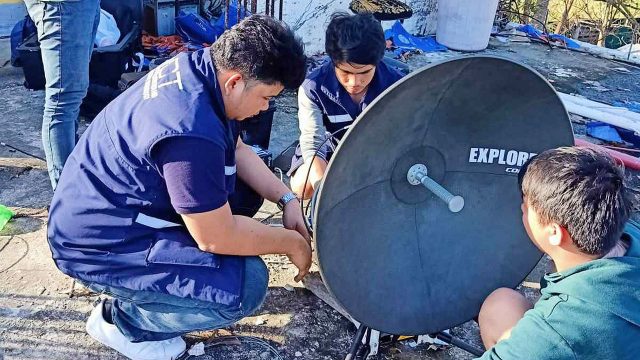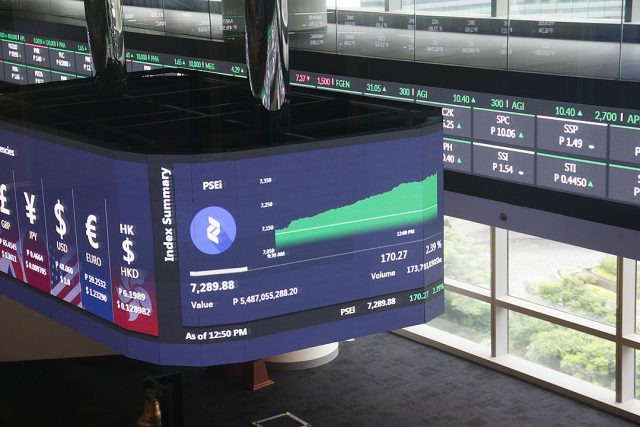(Part 4)
Despite the continuing weaknesses of our still fragile democracy, the Philippines is no longer known in international circles as the “sick man of Asia.” Since the beginning of the Third Millennium, as we saw in previous articles in this series, the Philippines has been constantly in the list of the most promising emerging markets, “breakout” nations, and the next generation of NICs (newly industrializing countries). These positive assessments of the Philippine economic future continued to pour in during the last four years, even when the Philippine political climate had darkened due to the perception by some outside observers that the present political leadership leaves a lot to be desired because of lack of respect for human rights, ineptitude in the handling of relations with China, and, more recently, tolerance of corruption among presidential cronies.
For example, just before the outbreak of the pandemic in early 2020, the Oxford Economics group came out with a list in November 2019 identifying 10 countries as the leading emerging markets that will dominate the global economy in the next decade. Among the 10 are six countries in the Indo-Pacific region which will surely lead the global economy in economic growth for many decades to come after the pandemic is put under reasonable control. The ranking is as follows: 1.) India; 2.) the Philippines; 3.) Indonesia; 4.) China; 5.) Malaysia; 6.) Turkey; 7.) Thailand; 8.) Chile; 9.) Poland, and, 10.) South Africa. The rankings took into account factors beyond just GDP figures and also considered funding availability and workforce growth, in which the Philippines ranked very high because of our young, growing and English-speaking population.
The short commentary in the summary of the report issued by Oxford Economics gives the following reasons for the second highest ranking given to the Philippines: “Currently led by the brash strongman Rodrigo Duterte, the Philippines are, much like Indonesia, a large island group, with huge economic potential. The Philippines is set to have the highest increase in its labor force of any of the top 10, alongside its GDP growth of 5.3%. This means that it will be one of the world’s fastest growing economies sooner rather than later.”
India got the top ranking because of “its massive GDP growth of 6.5%, and it’s likely to be the world’s largest economy one day not just within emerging markets. The country has a huge population and when fully utilized will be an unshakeable force across global markets.” In fact, within the next five years, it is very possible that India’s population will top China’s since the latter is suffering from “demographic suicide,” thanks to the one-child policy its government imposed for many years. Despite the recent effort of the Chinese government to encourage couples to have more children, the result has been discouraging. This is not a surprise since the lesson from Singapore is that once the contraceptive mentality has been ingrained in the minds of the women, no incentives work to encourage them to have more children. This rapid aging that China is already experiencing, which will intensify in the coming years, is one of the major reasons why China ranks only fourth in the ranking of Oxford Economics.
The reference of Oxford Economics to the highest increase in the labor force will remind us that the two strongest engines of growth before and after the pandemic are the remittances from some 10 million Overseas Filipino Workers (OFWs) and the huge dollar earnings of the BPO-IT sector. These two account for some 12% to 15% of the Philippine GDP. They would not be possible without our young, growing, and English-speaking population. During the pandemic, these were the two sectors that hardly suffered from the global meltdown. Despite the return of an estimated 800,000 OFWs who were laid off from their work abroad (especially in the Middle East), remittances from OFWs in 2020 dropped only by -0.3% while the whole economy was suffering from a GDP decline of -9.1%. For the first six months of 2021, OFW remittances grew at an average of 6%. As the whole world recovers, the demand for Filipino workers in the developed countries, especially for health workers and caregivers as well as service workers in the hospitality business will surely grow even more. Furthermore, the young and growing population (already at the 110 million level in 2020 and growing) will be a strong basis for high growth, considering that domestic consumption accounts for more than 70% of GDP. The Philippines, like China and Indonesia, will increasingly depend on the domestic market for its high growth in GDP, not on exports.
In addition to the very positive assessment of Oxford Economics about the long-term economic prospects of the Philippines, another think tank from the United Kingdom, the Centre for Economics and Business Research (CEBR), also presented the Philippines in a very good light as late as December 2020 (when COVID-19 was also raging all over the world). In a world economic forecast for 193 countries all the way to the year 2035, the CEBR foresaw the Philippines improving by 10 positions in the ranking in the World Economic League Table. Ranked 32 in 2020, the Philippines was forecast to rank 22 in 2035, one of the most improved among the 193 countries included in the study. CEBR forecasts that over the next five years, the annual rate of GDP growth is set to rise to an average of 6.7%. Between 2026 and 2035, CEBR forecasts that the average rate of GDP growth will dip slightly to 6.5% annually. Over the next 15 years, the think tank forecasts that the Philippines will move swiftly up the World Economic League Table rankings, from 32nd position in 2020 to 22nd in 2035. Here again, we have a completely independent institution issuing an optimistic long-term forecast about the Philippine economy.
The longest-term forecast made in recent times was that of the Hongkong and Shanghai Banking Corp. Ltd. (HSBC), issued on January 11, 2012, almost at the same time when Ruchir Sharma included the Philippines among the breakout nations. In a forecast all the way to 2050, the Philippines was singled out as the third among the countries that will deliver the fastest growth in GDP after China and India. In a review of the Report that appeared in this paper dated Nov. 25, 2014, the Philippine economy was projected to be the 16th biggest by 2050, surpassing such powerful economies as Australia, Indonesia, Egypt, Malaysia, Thailand, the Netherlands, Poland, Iran, Switzerland and Pakistan. Among the top 30 countries included in the forecast, the Philippines would register the largest improvement from 2012 to 2050, an impressive +27 jump in ranking.
The country’s exports are projected by HSBC to grow fivefold by 2050, on the assumption of a growth trajectory that remains among the highest in Asia, and enhanced by regional integration. Like the rest of the countries in the Asia Pacific region, the Philippines will benefit from such agreements as the Regional Comprehensive Economic Partnership (RCEP) that guarantees that the 15 economies in the RCEP will continue to be open to one another in trade and investment, avoiding the anti-globalization trends that have been observed in some advanced countries such as the America First focus of the US and Brexit of the UK. An opportunity for the Philippines, as well as the other nine members of the ASEAN Economic Community (AEC) is what HSBC sees in the share of intra-Asian exports expanding to 27% of the global total from 17% in 2012, based on “nimble networks of multinationals that create their own specialized value chains” that will also raise levels of prosperity in the countries in which they operate. The expansion in trade to 2050 will represent a “third wave” of globalization, following similar growth surges in the decades before 1913 and the post-World War II period. This makes it imperative for the Philippines to improve the ease of doing business so that it can compete with other ASEAN economies like Vietnam and Indonesia in attracting the factories leaving China to locate in the Philippines.
The HSBC report said that in the Philippines, “investment in infrastructure, such as ports, airports and better road networks will push down prices. There have also been changes in policies such as the rent amendments to the Cabotage law. Definitely there will be big improvements in the movement of products and people as the infrastructure and trade environment improves.” The report also added that one of the mainstays of the Philippine economy, the business process outsourcing industry, will continue to surf the demographic wave “as Filipinos are one of the youngest (median age is 24) in this part of the globe —coupled with improving literacy.”
In many ways, as we have observed in the first articles in this series, what the HSBC prognosticated about the Philippines, actually were accomplished during the past five years of the Duterte Administration, especially those pertaining to the significant improvement in infrastructures through the Build, Build, Build program. What still needs to be done is to reduce restrictions against foreign direct investments that may still be delivered before the end of the present Administration through the three pending bills in Congress, i.e., the Public Utility Act, Retail Trade Liberalization, and the Foreign Investment Act. As a member of the Constitutional Commission that drafted the 1987 Philippine Constitution, I am still hopeful that in the next Administration, the Philippine Congress can still amend the restrictive provisions in our Constitution against FDIs, especially in telecommunications, media, advertising, and higher education. n
To be continued.
Bernardo M. Villegas has a Ph.D. in Economics from Harvard, is Professor Emeritus at the University of Asia and the Pacific, and a Visiting Professor at the IESE Business School in Barcelona, Spain. He was a member of the 1986 Constitutional Commission.
bernardo.villegas@uap.asia












